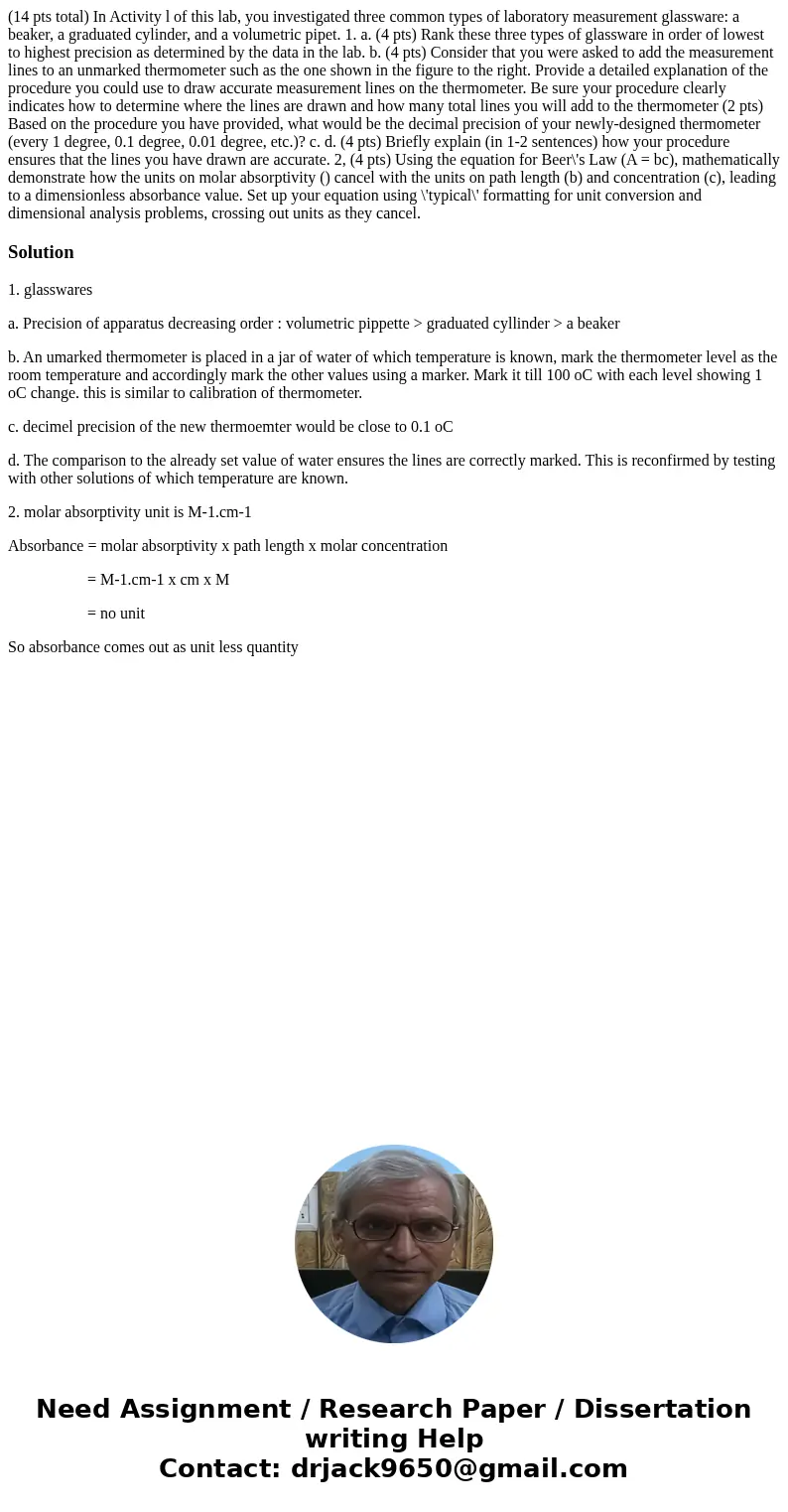(14 pts total) In Activity l of this lab, you investigated three common types of laboratory measurement glassware: a beaker, a graduated cylinder, and a volumetric pipet. 1. a. (4 pts) Rank these three types of glassware in order of lowest to highest precision as determined by the data in the lab. b. (4 pts) Consider that you were asked to add the measurement lines to an unmarked thermometer such as the one shown in the figure to the right. Provide a detailed explanation of the procedure you could use to draw accurate measurement lines on the thermometer. Be sure your procedure clearly indicates how to determine where the lines are drawn and how many total lines you will add to the thermometer (2 pts) Based on the procedure you have provided, what would be the decimal precision of your newly-designed thermometer (every 1 degree, 0.1 degree, 0.01 degree, etc.)? c. d. (4 pts) Briefly explain (in 1-2 sentences) how your procedure ensures that the lines you have drawn are accurate. 2, (4 pts) Using the equation for Beer\'s Law (A = bc), mathematically demonstrate how the units on molar absorptivity () cancel with the units on path length (b) and concentration (c), leading to a dimensionless absorbance value. Set up your equation using \'typical\' formatting for unit conversion and dimensional analysis problems, crossing out units as they cancel.
1. glasswares
a. Precision of apparatus decreasing order : volumetric pippette > graduated cyllinder > a beaker
b. An umarked thermometer is placed in a jar of water of which temperature is known, mark the thermometer level as the room temperature and accordingly mark the other values using a marker. Mark it till 100 oC with each level showing 1 oC change. this is similar to calibration of thermometer.
c. decimel precision of the new thermoemter would be close to 0.1 oC
d. The comparison to the already set value of water ensures the lines are correctly marked. This is reconfirmed by testing with other solutions of which temperature are known.
2. molar absorptivity unit is M-1.cm-1
Absorbance = molar absorptivity x path length x molar concentration
= M-1.cm-1 x cm x M
= no unit
So absorbance comes out as unit less quantity

 Homework Sourse
Homework Sourse